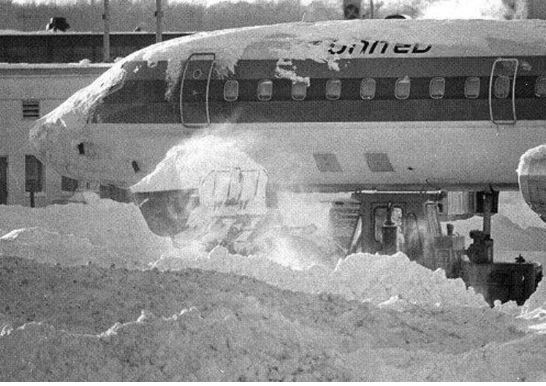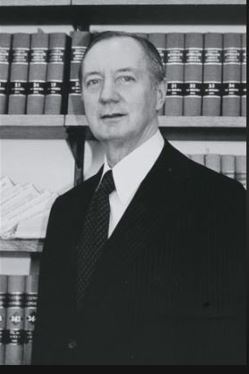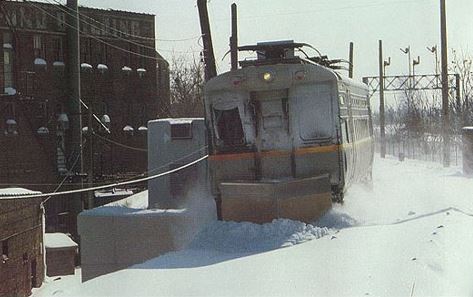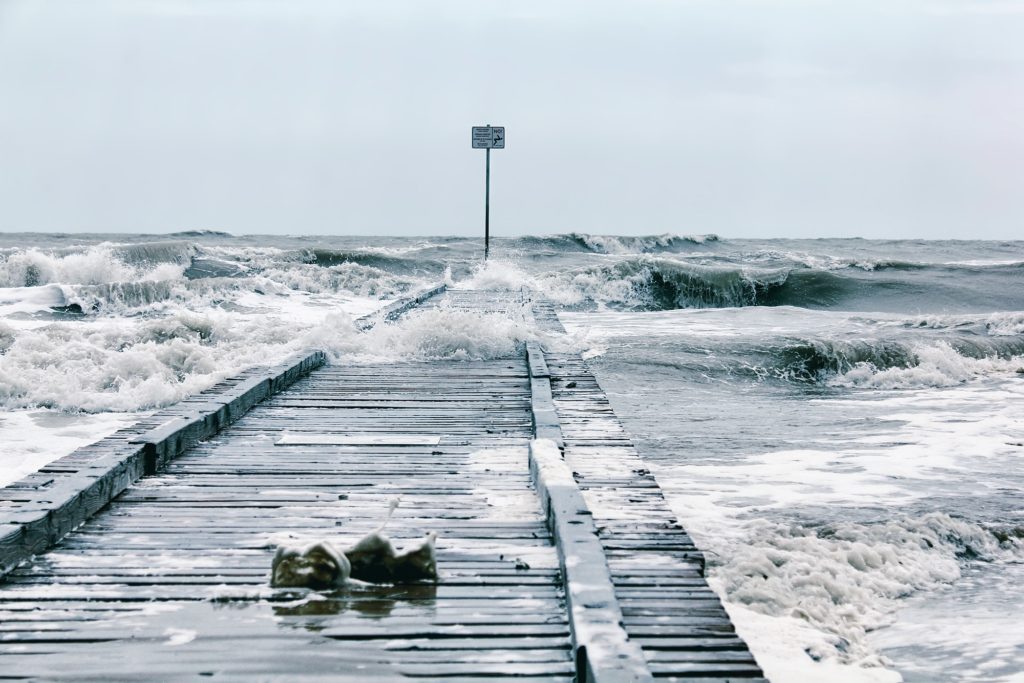I’m not sure what challenging issues mayors of some major cities fear the most, but snow has to be one of them. We can go back to 1969 in New York City when it was punished by a major snowstorm that wasn’t handled well. The mayor at the time was John Lindsay and the storm became known forever as the “Lindsay Snowstorm”. Mayor Lindsay lost the next Republican primary for mayor as a result. More recently, there was the “Snowpocalypse” fiasco that caught the city of Atlanta and Mayor Kaseem Reed flat-footed in 2014. Here, we will talk about a major blizzard that hit Chicago forty four years ago in January of 1979. The repercussions were not kind to Mayor Michael Bilandic.
The Storm
Leading up to the Blizzard of 1979, Chicago had already gone through a rough stretch of weather. A snowstorm on New Year’s Eve dumped nearly a foot of snow around the city. Temperatures remained cold and snow removal was becoming a major issue.
Here is an excerpt from the Chicago Tribune of an angry letter sent by a frustrated Chicago resident. “As a taxpayer and motorist, I am outraged at the condition of the Chicago and suburban streets. Streets weren’t plowed. Stalled and double-parked cars were blocking traffic everywhere, she explained. “Come on, City Hall. Chicago has enough manpower and resources to get the problem cleared up.” Unfortunately, this letter was written BEFORE the blizzard hit.
The snow from previous events didn’t go anywhere. From January 2nd through January 12th in the days leading up to the blizzard, Chicago had ten consecutive days with the temperature dipping to zero or below and the high temperature never made it above 20 degrees.
On Friday, January 12, 1979, skies were cloudy as people left their workplace during the late afternoon. There was snow in the forecast but accumulations were supposed to be in the 2 to 4-inch range. A few hours later, snow began to fall. It fell and it fell and it fell. The storm system responsible for the snow became much stronger as it passed south and southeast of Chicago and a cold northeasterly wind flow over the warmer waters of Lake Michigan significantly enhanced the snowfall. The snow began to wind down on Saturday night and it finally ended around 2 a.m. on Sunday. Winds up to 35 mph (with gusts over 40 mph) in the Chicago area produced considerable blowing and drifting of snow.
The official snow total from the storm at O’Hare Airport was 20.2 inches. At that time, it was Chicago’s second-greatest snowstorm on record. A city that was already a mess from previous snow events and very cold temperatures became a whole lot messier. When the storm ended, there were twenty-nine inches of snow on the ground.
The death toll from the blizzard was five and at least fifteen others were seriously injured due to the storm. One of the five deaths came when a snowplow driver had a mental breakdown, hitting thirty-four cars and running into a man.
Chicago’s O’Hare was closed and all flights were grounded for 96 hours from January 13th to the 15th. The continuation of the cold and snowy weather pattern resulted in frozen tracks throughout the Chicago “L” train system.
Snowplows try to clear the runway at Chicago’s O’Hare Airport following the blizzard of January 12-14, 1979. Photo Credit-Daily Herald.
Commuters crowded onto CTA buses, quickly overwhelming capacity, resulting in bus commutes usually taking 30 to 45 minutes taking up to several hours. To avoid huge snowdrifts in the streets, the overcrowded buses took numerous detours, adding additional time to the commute.
Chicago Mayor Michael Bilandic flew all around the city in a helicopter, observing snow removal operations. His office produced a number of imaginative plans for easing the paralysis, such as giving priority to snow clearance from 250 school and park district lots so that private cars can be moved there while plows cleared the streets.
A photo of Chicago Mayor Michael Bilandic who served from 1976-1979. Credit nhr. org-Public Domain.
It initially appeared that the situation was being handled by the mayor and the city. That optimism was short-lived, however, as problems began to spiral out of control in a hurry.
Political Fallout
In the days following the storm, Mayor Bilandic made a number of statements that turned out not to be true, or perhaps it was wishful thinking. Parking across the city became a nightmare. Mayor Bilandic told the Chicago Tribune that more than one hundred lots were open across the city. There were many complaints that many of the lots hadn’t been cleared. The Mayor doubled down and indicated that we wouldn’t advertise it if it wasn’t true.
The Tribune reported that one lot was filled with seven hundred cars that had been vandalized and it looked like a “snowy trap that resembles an automobile salvage yard.”
In an attempt to keep the rail lines open designated cars were kept out on the lines, attempting to push through the snow. This didn’t work very well as much of the snow was being plowed by the motor and undercarriage, not the car body. Snow was forced into cars and electrical equipment, causing damage to brakes, motors, generators, and couplers.
A photo of Car 24, with its distinctive paint scheme and bright orange belt rail, acts as a snow fighter taking on continuing snow drifts. The unit, operated by Superintendent Bruce Anderson is approaching Davis station on the Evanston Line on January 16, 1979. Photo Credit – Chicago Transit Authority
There was also a lack of communication on whether airports were open. Mayor Bilandic would appear on television assuring everyone the airports would remain open. Then a local news reporter would appear live at O’Hare to indicate that the airport was actually closed.
When asked about suggestions for the sick, elderly, and infirm who had outstanding parking tickets Mayor Bilandic said that they can tell their issue to a judge.
Because of the constant cold, snow remained on the ground until the first week of March.
Deployment of plows was delayed and when they finally came they failed to keep up with the snow. The result was continued transit delays and major problems with trash collection.
The inadequate response to the situation had major political ramifications on Mayor Bilandic, who had served as mayor since Mayor Richard Daley passed away in 1976. The local media was relentless in their criticism of the Chicago Transit Authority and Mayor Bilandic.
On February 27th, Jane Byrne, who had been Chicago’s commissioner of consumer sales since 1969 challenged Mayor Bilandic in the Democratic primary and she defeated him. On April 16, 1979, Jane Byrne was elected and she became the first female mayor of a major U.S. city. Chicago was the nation’s second-largest city at that time.
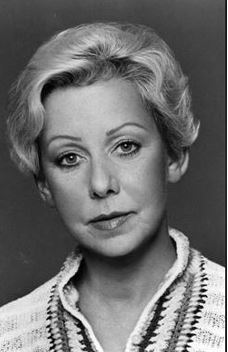 A photo of Jane Byrne who was elected as the first female mayor of a major U.S. city in 1979. Credit-Wikipedia-Public Domain.
A photo of Jane Byrne who was elected as the first female mayor of a major U.S. city in 1979. Credit-Wikipedia-Public Domain.
It’s no wonder that politicians such as governors and mayors are sensitive to potentially high-impact weather events. In recent years they are likely to declare a “state of emergency” ahead of the event, sometimes when many forecasts are only indicating low-impact storms.
Many people these days are critical and they accuse the politicians of overreacting but it looks like the better safe than sorry approach will prevail.

